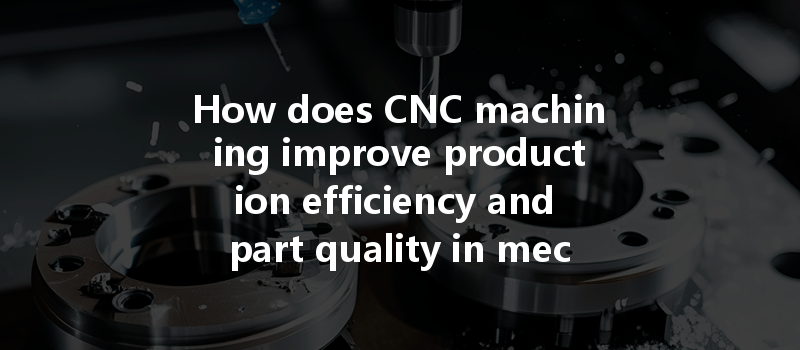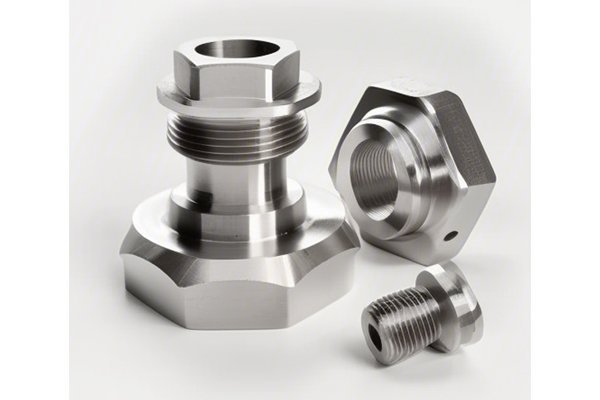Did you know that CNC (Computer Numerical Control) machining can drastically reduce production time and costs while significantly improving part quality? According to a report by Market Research Future, the global CNC machining market is poised to grow at a compound annual growth rate (CAGR) of over 5.6% from 2019 to
The Evolution of CNC Machining
Before diving into the advantages, it’s essential to understand what CNC machining entails. CNC machining evolved from traditional manual machining methods. In traditional machining, an operator manually controls machinery using hand tools, which is time-consuming and prone to human error.
CNC machining, on the other hand, uses computers to control machinery, allowing for greater precision and automation. This transformation has made CNC machining an integral part of modern manufacturing.
Benefits of CNC Machining
CNC machining is known for providing exceptional precision and accuracy. Conventional machining methods depend on the operator’s skill, leading to variations and inconsistencies.
With CNC machining, parts are produced to exact specifications by interpreting digital models. This technology minimizes the room for human error and ensures that each part is identical, resulting in higher quality outcomes.
CNC machines can operate continuously without the need for breaks. This uninterrupted operation will lead to higher throughput, enabling manufacturers to meet large orders in shorter lead times. Moreover, the setup process for CNC machines has been streamlined, providing a faster turnaround for new jobs.
CNC machining optimizes the use of raw materials better than conventional methods. By accurately calculating the necessary materials for a project, manufacturers can significantly reduce waste, which not only saves money but also contributes to sustainable practices.
One of the standout features of CNC machining is its ability to work with a wide range of materials, including metals, plastics, and composites. This versatility allows manufacturers to produce parts that meet specific requirements for different industries, whether for automotive applications or complex aerospace components.
CNC machining reduces the need for manual labor. Once a CNC program is established, the machine can run independently without continuous supervision. This allows skilled operators to focus on other important tasks, increasing overall efficiency within the workforce.
Implementing CNC Machining for Efficiency and Quality
To fully leverage the advantages of CNC machining, manufacturers must adopt several strategies:
Investing in high-quality CNC machines and software ensures optimal performance. The latest advancements in CNC technology, such as 5-axis machining and additive manufacturing capabilities, can push the boundaries of what is possible in manufacturing.
Although CNC machines operate autonomously, human expertise is crucial for programming and maintenance. Manufacturers should invest in training their workforce to effectively operate and troubleshoot CNC machinery.
A continuous feedback loop is essential for improving processes. Using data collected from CNC operations, manufacturers can analyze performances, identify bottlenecks, and optimize workflows for maximum efficiency.

Implementing robust quality control systems ensures that every produced part meets predefined standards. Techniques such as Statistical Process Control (SPC) can help monitor production and put corrective actions in place when variations occur.
CNC machining supports rapid prototyping, allowing companies to design and test new parts quickly. By producing prototypes, manufacturers can identify design flaws early in the process, making it easier to iterate on designs before proceeding with mass production.
Real-World Applications
To contextualize how CNC machining improves production efficiency and part quality, let’s look at a few real-world applications:
Automotive Industry
In the automotive sector, precision and speed are critical. CNC machining enables manufacturers to produce complex components with tight tolerances, ensuring that each part fits perfectly within the assembly. As a result, there is less chance of failure, which translates into higher customer satisfaction and fewer warranty claims.
Aerospace Sector
In the aerospace industry, the stakes are incredibly high. Components manufactured for aircraft need to meet stringent safety and performance requirements. CNC machines produce lightweight yet strong parts, which are crucial for optimizing fuel efficiency and ensuring structural integrity. The consistency provided by CNC machining leads to reliable components that meet rigorous aviation standards.
Medical Field
The medical field relies heavily on precision and quality for surgical instruments and implants. CNC machining can create intricate designs for devices that need to be made from biocompatible materials. This level of precision can be a matter of life and death, making the advantages of CNC technology crucial in this sector.
Common Challenges in CNC Machining
While CNC machining offers numerous advantages, it’s not without its challenges. Being aware of potential issues can help manufacturers address them proactively.
The costs of acquiring CNC machinery and related software can be significant. However, manufacturers should consider this an investment rather than an expense, as the long-term savings often outweigh the initial costs.
As machines become more advanced, the complexity of operating them increases. Manufacturers may require extensive training for employees, which could lead to a temporary reduction in output as teams become accustomed to new systems.
CNC machines are sophisticated pieces of equipment that require regular maintenance to perform optimally. Establishing a preventative maintenance schedule can mitigate unexpected downtimes, but it does require additional effort and resources.
In summary, the transformative impact of CNC machining on production efficiency and part quality in mechanical manufacturing cannot be overstated. By providing unmatched precision, improved production speed, reduced material waste, versatility in material use, and increased automation, CNC machining stands out as an essential tool for modern manufacturers.
The strategies discussed, including investing in technologies, developing skills, creating feedback loops, implementing quality control systems, and utilizing rapid prototyping, can further enhance the effectiveness of CNC machining.
Ultimately, understanding and embracing CNC machining is more than a trend—it’s a necessity for manufacturers striving for excellence in today’s competitive landscape. Becoming informed about the capabilities and advantages of CNC machining allows your business to thrive, reduce costs, increase quality, and maintain customer satisfaction.
So, if you haven’t already considered integrating CNC machining into your operations, now is the time to rethink your approach and embrace the future of manufacturing.



